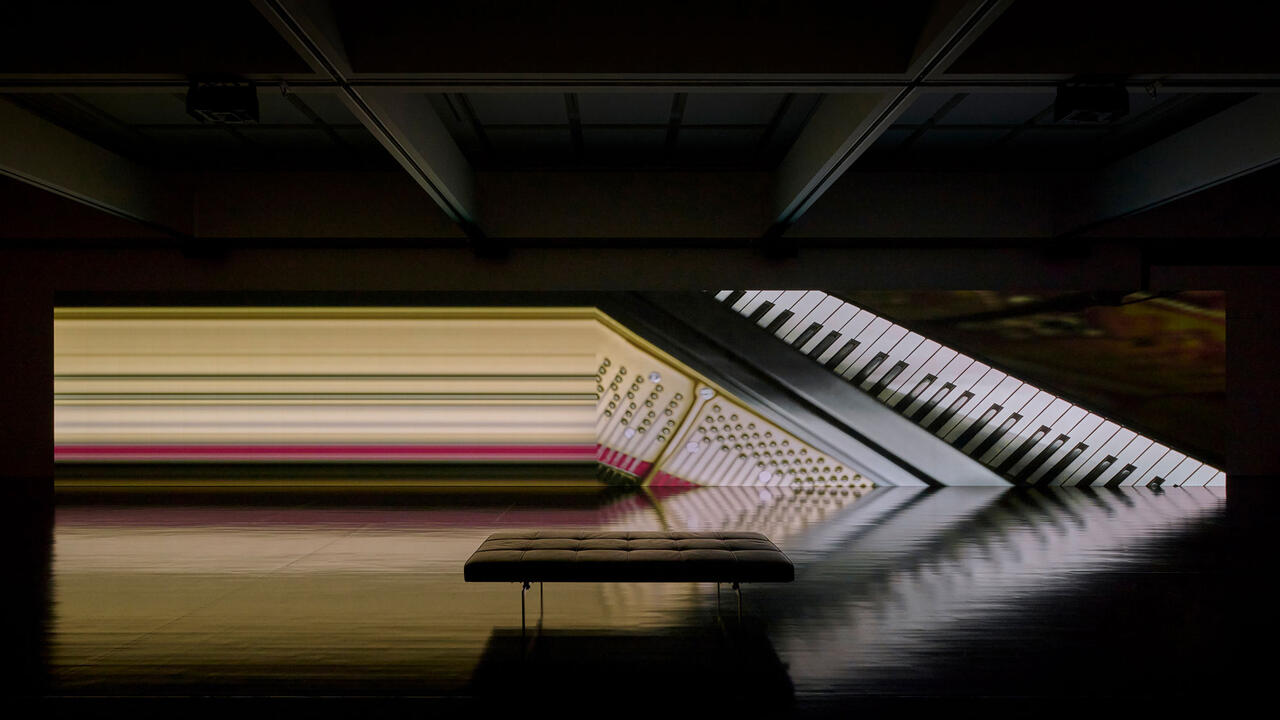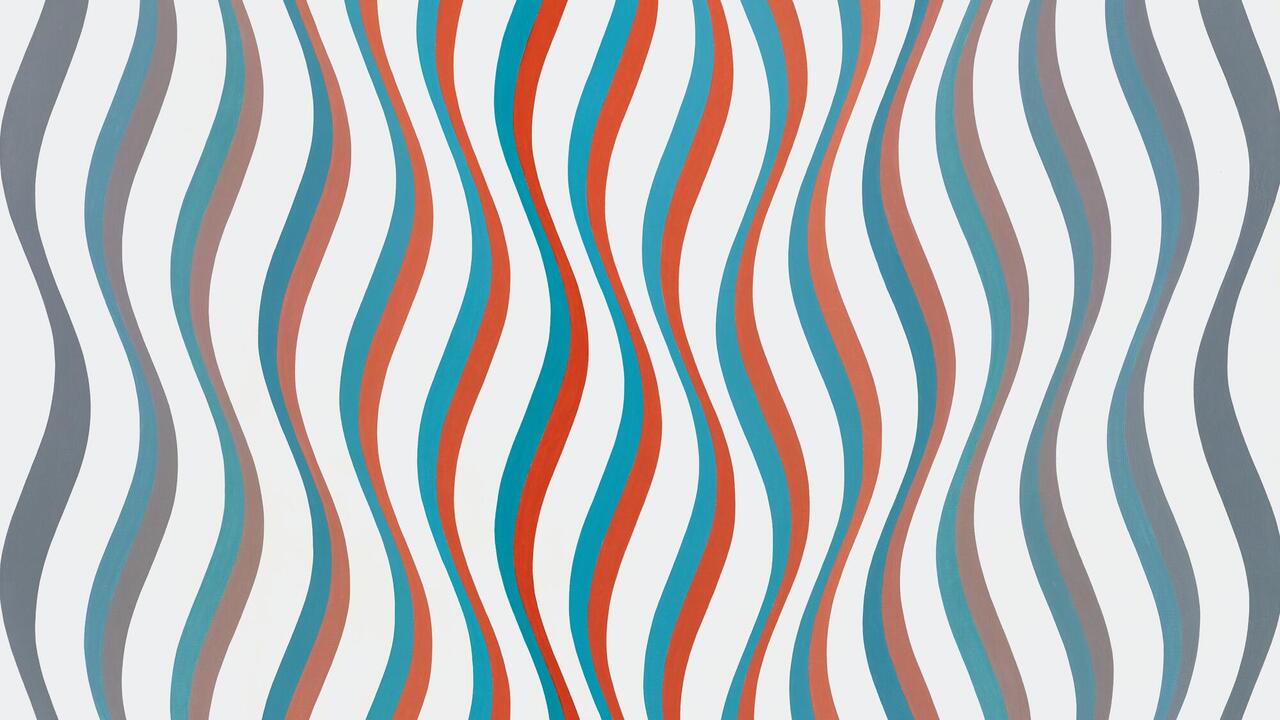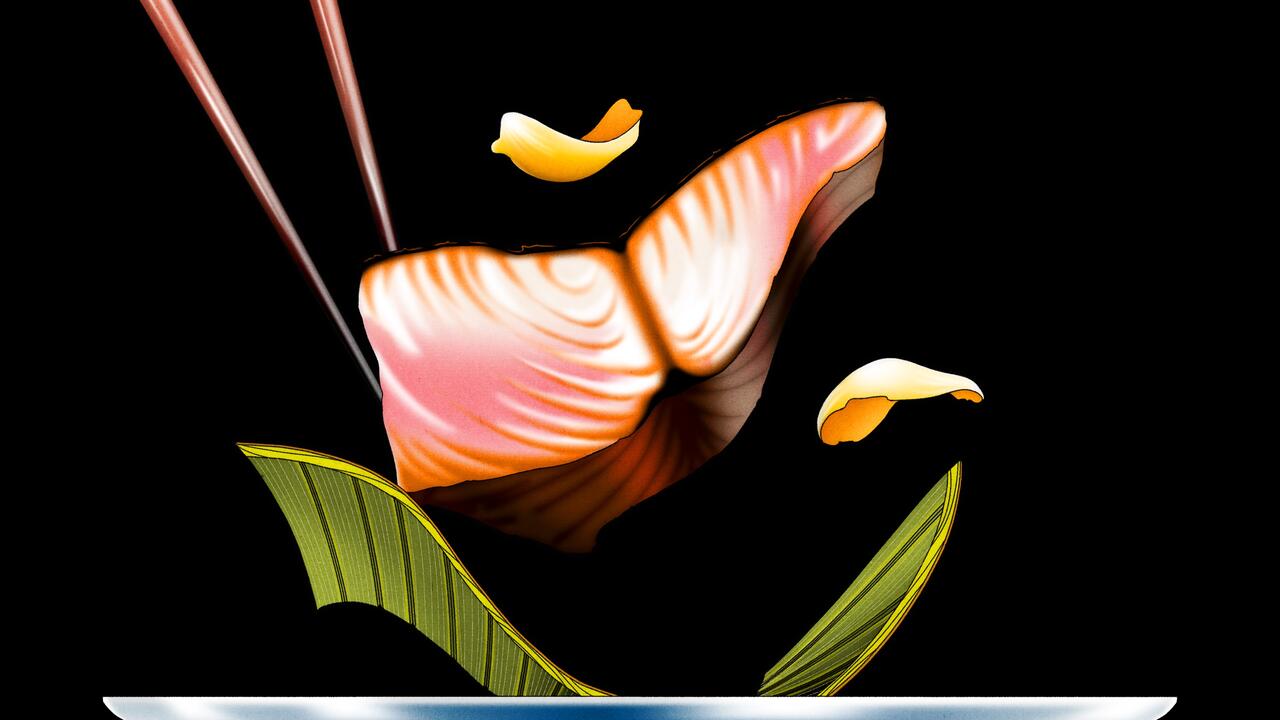Perception of Vision
Fascinated by accounts of seemingly mysterious perceptual experiences, the artist relates her findings and how they impacted her work
Fascinated by accounts of seemingly mysterious perceptual experiences, the artist relates her findings and how they impacted her work

Recently, there was an article in The Scientist magazine by Andrea Gawrylewski about a clinically blind man who has the ability to perceive objects without consciously being able to ‘see’ them. In ‘Blind Man Aces Obstacle Course’, Gawrylewski describes how the man’s visual cortex (the area of the brain in charge of processing visual information) was so damaged by a stroke that it no longer functioned; consequently he had a complete loss of vision. Although totally blind, he was able to navigate his way through an obstacle course without using instructions, voice, cane, or a guide. This man appears to have ‘blindsight’– the innate ability to negotiate a relationship between one’s body and objects in the world.1
This may sound illogical. But scientific journals are full of accounts of perceptual experiences that don’t follow the norm. For example, people with synesthesia, an inherited condition, have senses that are cross-wired or ‘joined’. They may perceive letters, numbers or musical notes as colours, or taste certain words when they hear them. Wassily Kandinsky was a synesthete, as was Vladimir Nabokov, who described his colour-letter synesthesia in his memoir, Speak, Memory (1951).

Silas Weir Mitchell, a 19th-century doctor who is now mainly known to laypeople for having prescribed a rest cure to Charlotte Perkins Gilman that became the basis for her short story, The Yellow Wallpaper (1892), wrote extensively about the myriad bizarre ailments he struggled to treat while working in a hospital during the American Civil War. Antibiotics had not yet been discovered and gangrene was common at the time, so the usual solution for soldiers’ infected limbs was amputation. Mitchell, a doctor in a hospital full of amputees, began to report in his journal the existence of phantom limbs – arms and legs which were amputated months or even years earlier, but which still felt present to the patient. In an effort to eradicate pain in the missing limbs, Mitchell made the stumps shorter or cut nerves supplying sensation to the effected limbs, yet the phantom pains did not disappear.
The idea of a phantom limb is intriguing. How can someone feel sensation in an arm that has been amputated? In past years there have emerged explanations based in the field of neurology. V.S. Ramachandran, a neuroscientist who teaches at University of California in San Diego, has developed a method to treat phantom limb pain using information relating to how parts of the body, such as the arms and legs, are ‘mapped’ onto the cortex of the brain.2 This method is based on an understanding that, contrary to previous beliefs, the brain map (that is to say, the body map created in the brain through a combination of genetics and experience) is remarkably plastic, and can speedily morph in case of injury. For example, when a part of the body such as a leg is amputated, the section of the brain that is in charge of the amputated leg can be taken over by surrounding parts of the brain in as little as 48 hours.3
Using the diagram known as the Penfield brain map (see Fig. 2) as a premise, Ramachandran devised an ingenious way to cure people of pain in their phantom limb by using something very simple: a mirror. By holding one’s arm inside a mirror box, Ramachandran discovered that the visual information from viewing the reflected image of the existing limb could trick people’s minds, enabling them to ‘re-map’ their brains and forget the memory of their phantom limb pain.4

When I first read about Ramachandran’s experiments with mirrors, I was intrigued by the potential of vision, movement and mirrors to re-map one’s brain. I consequently read a number of articles in science journals about how the mind processes vision, and soon began to realize that my grasp on the subject was primitive. My understanding of visual perception followed a 17th-century model: that one’s milieu provides sensory input, which the brain then processes and reacts to. In other words, I thought seeing happened when the eyeballs transmitted information to the brain via the optic nerves, like a cable conducting an electrical current, and the brain in turn interpreted and deciphered this information. But if this were true, the assumption would be that the majority of neural pathways going to the area of the brain dedicated to processing sight – the primary visual cortex – would come from the eyes. In fact, only 20 percent of the neural pathways from the eyes travel to the primary visual cortex; 80 percent come from other areas of the brain, such as those in charge of memory. The anatomically-based deduction is that when the brain processes vision, the vast majority of information is not coming from the eyes, but from memory. In fact, it is now estimated that visual perception is 80 percent memory and 20 percent input through the eyes. In other words, sensory information is not transmitted to the brain; it comes from it.5
In many ways, this makes sense. For every second of our lives, our brains are confronted with a superabundance of sights, smells, sounds and tactile information. How can the mind possibly process this overload of sensory information and organize it into a coherent, non-invasive experience so that we can essentially ignore it and go about daily life? It doesn’t. A fundamental rule of vision is that the brain wriggles out of the task, doing as little as possible in order to accomplish what is necessary. To cut corners, the brain relies on the fact that there are certain qualities to the world that are constant and unchanging, filtering the glut of incoming information and eliminating detail in favour of basing perception on memories of what it already knows to be true – for example, that peaches are fuzzy, the sun shines from above, and the interior floors of houses are usually flat. These predictable recurrences are based on past experiences and are wired into the brain from an early age. By relying on these known facts, the brain is able to avoid the enormous task of combing through every little detail it comes into contact with, using predictions based on rough estimations and memories of past experiences instead.

So, if it is true that we construct an idea of reality based on scraps of information and memories about what is constant about the universe, then what is reality, and how can one be certain to possess an accurate perception of it? Vision provides a dependable – but inaccurate – depiction of the world; in the act of seeing, the brain provides much of the omitted information to create an idea of reality which seems complete and coherent. But if reality is 80 percent memory or inference, its potential for instability arises.
I became interested in these ideas somewhat against my will. Previously, my experience with mirrors, vision, movement and the mind was limited to childhood games, such as the trick of simultaneously drawing backwards and forwards on a sheet of paper with both left and right hands. In 2005 I was in a car accident, and as a result my relationship to movement immediately changed. This accident caused me to lose the ability to move my arms. After four months of visiting doctors, it became clear that my injury was caused by a perception disorder triggered by the impact of the accident – one of the same perception disorders, in fact, first documented by Silas Weir Mitchell during the Civil War. After trying to treat the condition with little success, I spoke to my doctor about Ramachandran’s experiments with mirrors and vision. Evidently the condition had been treated using mirror boxes; we discussed the possibility of using one in conjunction with physical therapy as a way to trick the brain into remembering how to move again.
The mind filters the vast amount of information taking place in the world based on memories of past experiences, not on the reality of what's actually happening.
This entire experience was unbelievable to me. In an attempt to understand this bizarre chain of events I started to puzzle through science journals, searching for information about perception and memory that could explain what was happening to me. The more I read, the more I became intrigued by what I learned about the operations of the mind – how it filters the vast amount of information taking place in the world based on memories of past experiences, not based on the reality of what’s actually happening. I was particularly attracted to the potential of vision, movement and mirrors to change the blueprint of the brain.
These articles, and this entire experience, provided the starting point for an art work. I decided to make a 16mm film that synthesized the information I had absorbed, to function as a faux-experiment and re-wire the brains of my viewers. The film would consist entirely of views of slow, deliberate movements reflected in mirrors.

Following instructions I found on the Internet, I built the first mirror box for practical reasons – because I wanted to use it. I then built a series of mirror boxes to be used as props within the space of the film. I made them from utilitarian materials such as plywood and set them on industrial-grade dolly wheels so they could be pushed, rotated and generally give the impression of movement when filmed. When making the mirror boxes, I was inspired by the props used by Judson Dance Theater in the 1960s – specifically, by Yvonne Rainer’s 1960s’ film works that depict dancers making movements alongside efficiently-made objects. I liked how the props in these pieces were scaled to the size of a human body and were simply constructed out of wood, mattresses and other ordinary domestic materials. The backdrop in the film is the closest version of a fake reality that I could find: a cast-off Hollywood stage set that I acquired from a television show, Boston Legal, for the project. I wallpapered the mirror boxes to camouflage them in the set.

Creating an art work with the goal of re-wiring brains is a folly that I never truly expected or hoped to achieve. I see it instead as an unobtainable quest whose failure functions as a component of the work. Ultimately, the finished film leaves its origins in texts about visual perception and becomes, quite simply, an abstraction. Titled Phantom Limb (2009), the film is a moving collage-shot of mirrors in slow-motion. It’s edited in a mirror pattern, so the end sequence of the film is a backwards and negative reflection of the beginning sequence of the film. In style, it employs a coterie of special effects from the early days of filmmaking, such as double exposures, dissolves and negative images, and is greatly influenced by experimental films by artists such as László Moholy-Nagy and Man Ray. I chose to use the medium of 16mm film for this project because I wanted to present perceptual phenomena as experiences, not concepts, and film’s ability to record and depict movement made it an appropriate way to address the ideas in the work. I believe there is a logic that connects the medium of 16mm film to the mirror box. It’s a rather simple, rudimentary, hands-on format; its history as an educational tool, especially in the sciences, made it an obvious choice to reflect on the brilliant functionality of the mirror box, a simple device used to treat an extraordinarily complex phenomenon.
1 Andrea Gawrylewski, ‘Blind Man Aces Obstacle Course’, The Scientist, 22 December, 2008. These ideas were first explored in ‘Intact Navigation Skills after Bilateral Loss of Striate Cortex’, in Current Biology, Vol. 18 No. 24, by Beatrice de Gelder, December 2008.
2 The brain map was developed by Wilder Penfield in the 1940s. Before operating on patients who suffered from epilepsy, Penfield stimulated different parts of their brains with electrodes to locate the cells that set off their attacks. By watching involuntary movements in people’s bodies while stimulating their brains, Penfield was able to map the motor cortex. Reprinted in W. Penfield and T. Rasmussen, The Cerebral Cortex of Man, The Macmillan Company, New York, 1950
3 V.S. Ramachandran Phantoms in the Brain: Probing the Mysteries of the Human Mind, Harper Perennial, New York, 1999, pp. vii, 21–34
4 Ramachandran, ibid, pp. 48–56
5Richard Gregory, ‘Brainy Mind’, British Medical Journal, 19 December 1998, issue 317: pp. 1693–1695





















